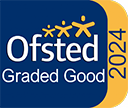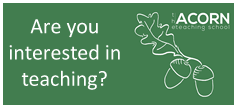Nursery News 7th February 2022
NURSERY NEWS
7th February 2022 – Edition 251
Find out About
- Parent Consultations for Big Nursery – reminder
- Phonics Programme begins this week for the big nursery children
- Water Bottles
- Thank you for your donations!
- Half Term Break
- What the children are learning about this week
1. Parent consultations for Big Nursery – reminder
If you made a telephone appointment to speak to your child’s keyworker, here is a reminder of the day to expect your call…
Miss Howe – Monday 7th February
Mrs Cashmore – Tuesday 8th February
Mrs Patterson – Wednesday 9th February
Miss Skai – Thursday 10th February
2. Phonics Programme begins this week for the big nursery
Phonics at Grouptime….
(for those children who leave us in July 2022 to go to primary school )
This week, staff begin our phonics program delivering structured phonics activities at grouptimes. Children will focus on learning one new sound each week. Every Wednesday, we will send home a worksheet introducing the new sound to be practiced. We use the Jolly Phonics program. Each letter has a name, a sound and an action. The sheet we send home explains this and shows you, their parents the action to perform. Making a movement linked to a sound helps children to recall the sound. Please encourage your child to learn the new sound and action. Have a go at writing the letter shape and colour in the picture. Keep the sheets together, perhaps in an A4 ring binder. Learn the new sound each week, but also go over all the previous sounds.
Your children are still very young, so only do this with your child at an appropriate time and not for too long.
You need to present the activity to your child as a fun task that they should look forward to doing with you. ‘Little and often’ is a good way to learn letter sounds.
Information from Miss Howe regarding our phonics program:
‘Phonics’ is one tool children can use when they are beginning to learn to read and write.
The Department for Education (DfE) produced a phonics resource called Letters and Sounds: Principles and Practice of High Quality Phonics. This resource splits the teaching of phonics into six phases. At Willow, we work on phase 1 activities all the time. Phase 1 describes using activities such as storytelling and singing songs, rhymes, music, role play and listening games. This will give the children opportunities to listen carefully and talk extensively about what they hear, see and do. Phase 1 activities are designed to underpin and run alongside activities in other phases. Phase 2 is an introduction to more formal phonics work and involves teaching the children sets of letters in a specified order. The first set of letters to be learnt are s.a.t.i.p.n because these letters make a greater number of words than any other 6 letters in the alphabet. We feel that the children at Willow are ready to begin focussing on letter sounds in a fun and practical way.
What are we going to do?
- Each child will participate in 1 x 25 minute phonic sessions each week
- We are going to begin teaching 6 letter sounds, s.a.t.i.p.n. and will continue with one letter sound each week until the end of the summer term
- We will teach the children that all letters have a name, and that these letters make a sound. For example: the letter S makes the sound ‘sss’
- We will use a mixture of songs, games, tongue twisters, art, drama and movement activities to teach the letter sounds.
We will use ‘Jolly Phonics’ with the children. Jolly Phonics is the name of a program used to teach phonics. Each week we will:
- Tell the children a story, which includes focussing on the sound we are trying to teach.
- Teach an action to represent the sound
- Send home a picture (linked to the story) for the children to colour, and they can practise writing the letter which represents the sound.
For example: The ‘s’ story involves finding a snake which goes ‘ssss’. The action for ‘s’ involves making a snaking movement with your hand and forearm and saying ’ssss’. The picture to take home is a picture of a snake
Helping at home:
The picture your child brings home will explain to you how to make the action to represent the sound. Talk with your child about what they have learned at school. Learn the actions along with your child. Making the movement may help your child to remember. Have fun!
Phonics
What is phonics?
Phonics is the word used to describe the sounds the letters make. In simple terms, the word ‘cat’ can be read from its three sounds: c-a-t.
These are not the names of the letters as we say them in the alphabet, but the sounds these letters make. The word ‘thick’ is made up of three sounds: th-i-ck, where pairs of letters combine to make a single sound. Similarly, ‘rash’ is made up of three sounds: r-a-sh.
There are 40+ sounds in English but only 26 letters that are used to represent these sounds.
The five basic skills for reading and writing are:
- Learning the letter sounds
- Learning the letter formation
- Blending
- Identifying sounds in words
- Spelling the tricky words
When reading, children need to understand the meaning of the words. Before they can do this, they have to be able to work out what the words say. The phonic skill for this is to look at the letters, say the sounds and hear the words. This is called blending.
The main phonetic skill for writing is to start with the spoken word, then listen, identify and write the sound in that word. The ability to hear the sounds in words is called phonological awareness. For example, with the word ’bin’ if you listen you hear the sounds ‘b……i….n’. Then if you know how to write those letter sounds, you can write the word ‘bin’ without help. This is the opposite to the skill needed for blending.
The letters for the 42 Sounds of English
a ……ant, sand, caravan
ai……aim, aid, drain, (long a)
b……bat, bend, crab
c ……cat, cot, duck
d……dog, dip, sudden
e……egg, end, shed
ee……eel, creep, tree (long e)
f……fog, lift, fluff
g……goat, gap, digger
h……hop, hit, hill
i……ink, indian, drink
ie……pie, tie, die (long i)
j……jelly, jet, jumper
k……king, kind, kettle
l……leg, lost, shell
m……man, mill, shrimp
n……nut, nip, spin
o……orange, on, spot
oa……oak, oats, boat (long o)
p…….pig, pet, step
q……queen, quick, quin
r……run, rabbit, barrel
s…..sand, sun, twist
t……top, tug, mat
u…….up, under, lung
ue……due, Tuesday, cue
v……van, vet, give
w…..wind, went, swim
x…..x-ray, ox, flex
y……yell, yes, yellow
z……zoo, zebra, buzz
sh……ship, shop, wish
ch……chop, chick, much
th……this, then, with (voiced th)
th……thin, thick, thimble (unvoiced th)
ng……song, bang, string
oo……look, room, foot (little oo)
oo……moon, spoon, shoot (long oo)
ar……art, arm, start
er……kerb, stern, sister
or……order, corn, storm
oi……oil, ointment, spoil
ou……out, cloud,
3.Water Bottles
Just a reminder to label all children’s water bottles. It helps the staff to distinguish which bottle belongs to which child!
4.Thank you for your donations
Thank you to everyone that has brought in a box of tissues or some materials for our box modelling area. Please continue to save your recyclable materials for us over the half term break and bring them in on our return!
5.Half Term Break
The nursery will be closed for half term from Monday 14th February until Friday 18th February 2022. We return to nursery on Monday 21st February 2022.
6.What the children are learning about this week?
The theme in little nursery this week is The Gruffalo.
In Catkins, the children will be making Gruffalo rice crispy cakes with Mrs. Field. They will also be drawing and colouring Gruffalo pictures with a focus on pencil control and building on fine motor skills.
In little nursery, the children will be reading The Gruffalo by Julia Donaldson. They will be using playdough and other resources to create their own versions of characters from the story.
Outside, the children will be going on a character hunt. The children will talk about characters from The Gruffalo story and search for their pictures in the garden.
The theme in big nursery is keeping healthy.
In room 1, the focus will be on healthy eating and the children will take part in a shared read of Handa’s Surprise. The children will each have a book and will practise reading with an understanding that we read from left to right and top to bottom. There will be a range of other activities available that will build on fine motor skills, such as using scissors and threading string through pictures of fruits and vegetables.
In room 2, Mrs. Patterson will be looking at emotional wellbeing and encouraging the children to identify different emotions. The children will have mirrors to look at themselves and the different expressions they make; they will be able to paint these images using the easels.
Outside, the children will be focused on physical fitness and Miss Skai will set up an obstacle course. The children will be able to think about the effects exercise has on their bodies while building on their developing physical skills.



